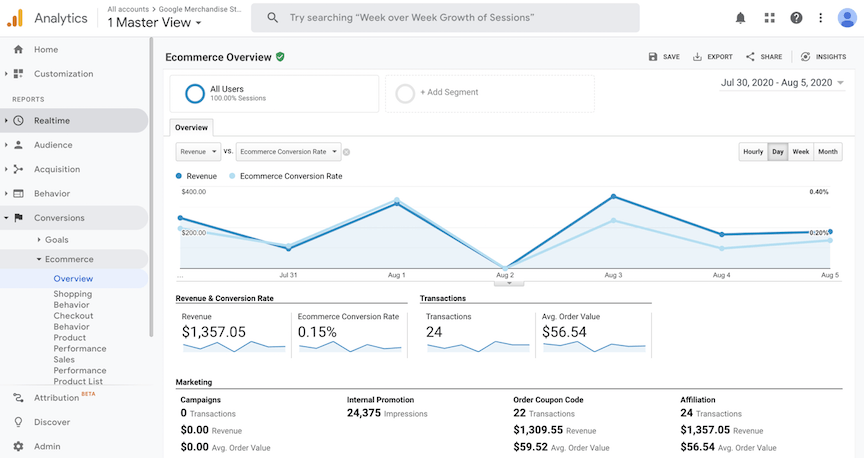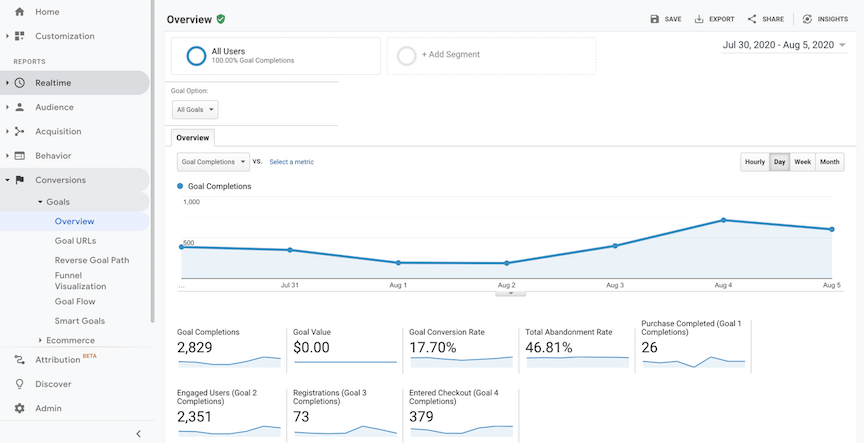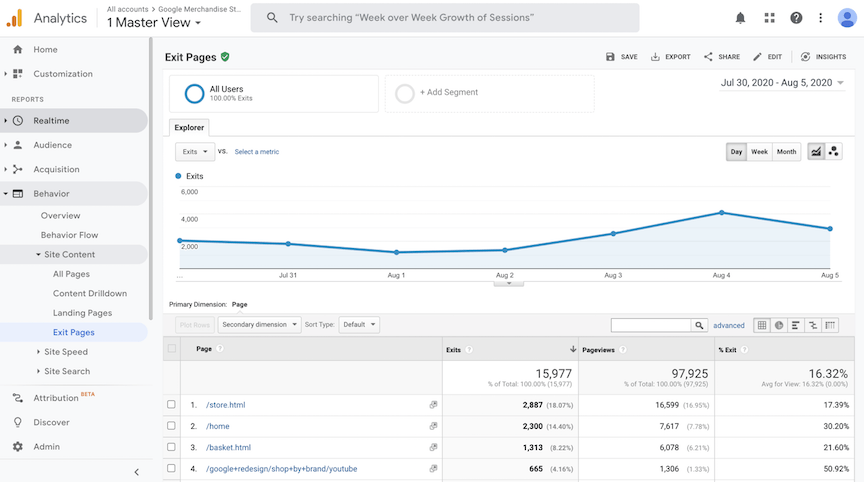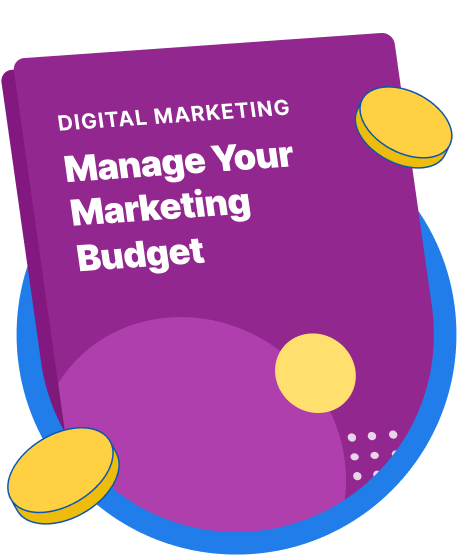-
 8 min. read
8 min. read
-
 Sarah Berry
Sarah Berry Web Marketing Consultant
Web Marketing Consultant
- Sarah Berry is a Google Analytics-certified Web Marketing Consultant at WebFX. She’s written over 400 articles on digital marketing, covering topics like SEO, CRO, and Amazon. When she isn’t polishing her Time Magazine Person of the Year Award, she’s spending time with her flock of ducks.
If you’re unhappy with your website’s conversion rate, you’re not alone. Only 22% of companies are satisfied with how many of their site visitors are converting. So, how can you increase the number of conversions on your ecommerce site?
The answer is conversion rate optimization, or CRO. Keep reading to learn how to get started with CRO for ecommerce! To learn how our CRO services can help you grow your ecommerce business, request a free quote!
Bonus video: 9 tips to improve your ecommerce conversion rate
What is CRO for ecommerce?
CRO is the process of implementing and testing changes to your website and marketing strategies to increase your conversions.
For ecommerce websites, a conversion is often a sale but could also be a specific action like signing up for an email list, downloading a product guide, or posting a review.
Why is CRO important for ecommerce?
CRO is important for ecommerce businesses because it often leads directly to an increase in sales. Ecommerce CRO is also a cost-effective way to increase your revenue. It helps you make the most of your existing site traffic instead of focusing on bringing in additional traffic.
Relatively small changes can also lead to significant increases in sales. For example, you may be able to increase sales by reducing the number of form fields on a page to simplify the conversion process, which costs your business next to nothing.
How do you measure your ecommerce conversion rate?
Ecommerce conversion rate is typically measured by dividing the number of conversions by the total number of website visitors. Here’s the conversion rate formula:
Website visitors / conversions = conversion rate
So, if your site has 100 visitors, and 10 of them convert, your conversion rate would be 10%.
One factor to consider is whether you’re using the total number of sessions on your website or the number of unique visitors. To track ecommerce conversion rate in Google Analytics, go to the ecommerce overview report. There you can see your conversion rate, which Google measures as sessions divided by conversions.
You can also see average order value, total revenue, and other useful metrics.

To measure conversions other than sales in Google Analytics, you’ll need to set up Goals, which tell the program what conversion actions to track.

Ecommerce CRO benchmarks
Wondering how your conversion rate compares to the rest of the ecommerce industry? A recent study found that the average conversion rate for ecommerce is 3%. However, conversion rate varies by ecommerce sector.
Here are the average conversion rates for the sectors included in the study:
- Gifts: 4.9%
- Health and pharmacy: 4.6%
- Apparel and footwear: 4.2%
- Other: 3.4%
- Sports: 3.1%
- Jewelry and cosmetics: 2.9%
- Major chains: 2.3%
- Home furnishing and décor: 2.3%
- Automotive: 2.2%
- DIY and tools: 1.7%
- Consumer electronics: 1.4%
When calculating your CRO, keep in mind that every business — even in the same industry — is different. These benchmarks are merely standards to give you an idea of industry averages.
How to perform CRO for ecommerce websites
So, how do you perform CRO? Here are three basic steps to follow:
1. Setup
If you don’t have tools set up for tracking conversions, this is the first thing you should do. Google Analytics is one of the most popular conversion tracking tools. Other options include Kissmetrics, Piwik, and Crazy Egg.
Make sure you set up your tools to track the right conversions. If you need help choosing or setting up your conversion tracking software of choice, reach out to WebFX for help!
2. Audit
Next, you can conduct an assessment of your site to determine what the biggest obstacles to conversions may be. One way to do this is to check which pages users most often leave your site from. For example, maybe users add items to their cart but exit from your shipping information page before completing the purchase.
This could indicate an issue with your shipping page, such as a confusing process, forms that are too long, or a lack of appealing shipping options. In Google Analytics, this metric is called exit rate. You can check the exit rate of your pages under Behavior > Site Content.

An initial CRO audit can help you determine which areas to optimize first to most dramatically increase your ecommerce conversion rate.
To gain insight into your current CRO, try our free conversion rate calculator!
3. Test
Testing is a crucial part of CRO for ecommerce and is a must-use conversion rate optimization technique. The same changes won’t work for every website, so while you can use other websites to get ideas, make sure you test all of your CRO changes yourself. Use A/B testing to test your CRO updates.
A/B testing involves creating two versions of a page and showing each version to a different randomized group of site visitors. For example, you might place a call to action (CTA) to get a free quote on one version and a CTA for a free trial on the other version. Track performance for each version of the page to determine which resulted in more conversions.
Then, keep the winning option and test another aspect of the page.
Ecommerce CRO best practices and key principles
When determining what to test, it’s important to think about things from your customers’ perspectives. Consider what goals they’re hoping to accomplish when they come to your website, and how you can help them achieve their objectives as quickly and easily as possible. In most cases, when it comes to CRO for ecommerce, visitors are looking to either make a purchase or research a product.
You need to consider potential obstacles to your visitors completing their goals. While the barriers are different for every website, some common issues include:
- Complexity: If there’s too much going on with your page, visitors may get distracted or overwhelmed. Simple designs and a clear path for users to follow often work best.
- High workload: How much work do your visitors have to do to make a purchase? Generally, the more effort and time involved, the less likely users are to convert. Try reducing the number of steps in the checkout process.
- Inconsistencies: If your users don’t get what they expect when landing on a page, they may think they’re in the wrong place. Make sure your designs, terminology, and offers are consistent throughout the purchase process.
- Lack of relevance: Is the information on your page relevant to the users’ objectives? If not, they may become frustrated and go elsewhere.
Auditing and testing the right areas
So, what aspects of a website might cause a user to become confused or frustrated and abandon the conversion process? Which elements of your site should you check when performing ecommerce CRO assessments? Here are some of the areas the WebFX team checks when conducting CRO.
- User experience: One of the most important ecommerce CRO best practices is to make sure your site has a user-friendly design and simple navigation. Your site should also work well on all types of devices, including mobile, tablet, and desktop. Use responsive design to enable your website to adapt to the device on which someone views it.
- Page speed: Over 80% of users expect sites to load in three seconds or less. Studies have shown that decreasing load time can increase conversions. Intuit, for instance, found that each second they shaved off their load time led to a 3% increase in conversions when load time was between 7 and 15 seconds.
- Conversion funnel: Another vital element to check is your conversion funnels — the paths users take to complete a conversion. Longer and more complex funnels often cause more leads to drop out of the process.
- Website copy: When performing CRO, we also assess website copy. Your copy should provide your visitors with useful information and get your message across clearly.
- Aesthetics: We also analyze how your website looks. Your site should have a consistent design that’s aesthetically pleasing, as this makes your site appear more trustworthy and keeps visitors on your site longer.
- Internet marketing: If your marketing strategies bring unqualified traffic to your site, you’ll have a low conversion rate. Adjusting the targeting of your marketing efforts can increase your ecommerce conversion rate by bringing the right users to your website.
Partner with a team of ecommerce masters!
WebFX campaigns have delivered more than 14,936,451 ecommerce transactions in the last 5 years
Read the Case Studies

Ecommerce optimization services from WebFX
Want to increase your ecommerce website’s conversion rate? Consider professional CRO services from WebFX. We provide a wide range of ecommerce optimization services that get results.
Over the last five years, we’ve managed 14.9 million transactions for our clients. To get started, request your free quote today!
-
 Sarah Berry is a Google Analytics-certified Web Marketing Consultant at WebFX. She’s written over 400 articles on digital marketing, covering topics like SEO, CRO, and Amazon. When she isn’t polishing her Time Magazine Person of the Year Award, she’s spending time with her flock of ducks.
Sarah Berry is a Google Analytics-certified Web Marketing Consultant at WebFX. She’s written over 400 articles on digital marketing, covering topics like SEO, CRO, and Amazon. When she isn’t polishing her Time Magazine Person of the Year Award, she’s spending time with her flock of ducks. -

WebFX is a full-service marketing agency with 1,100+ client reviews and a 4.9-star rating on Clutch! Find out how our expert team and revenue-accelerating tech can drive results for you! Learn more
Try our free Marketing Calculator
Craft a tailored online marketing strategy! Utilize our free Internet marketing calculator for a custom plan based on your location, reach, timeframe, and budget.
Plan Your Marketing Budget
Table of Contents
- What is CRO for Ecommerce?
- Why is CRO Important for Ecommerce?
- How Do You Measure Your Ecommerce Conversion Rate?
- Ecommerce CRO Benchmarks
- How to Perform CRO for Ecommerce Websites
- Ecommerce CRO Best Practices and Key Principles
- Auditing and Testing the Right Areas
- Ecommerce Optimization Services from WebFX

Maximize Your Marketing ROI
Claim your free eBook packed with proven strategies to boost your marketing efforts.
Get the GuideTry our free Marketing Calculator
Craft a tailored online marketing strategy! Utilize our free Internet marketing calculator for a custom plan based on your location, reach, timeframe, and budget.
Plan Your Marketing Budget




